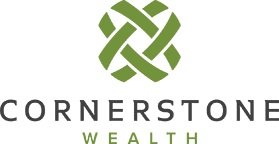Cliff’s Notes: U.S. Market and Economic Outlook - August 2025
By Cliff Hodge, CFA | Chief Investment Officer
“The waiting is the hardest part.” – Tom Petty
Economic Update: August 2025 – Major Themes for Investors
As we sit in mid-August, the Dog Days of Summer are upon us in the Southeast. The kids are back in school, parents are getting back into our normal routines, and football is right around the corner. As we wait for cooler weather, the economy and broader markets are also in wait-and-see mode.
Key questions for investors in August 2025:
When will the Fed begin cutting interest rates?
Will new tariffs ignite another wave of inflation?
Is the U.S. labor market losing steam?
How will interest rates and mortgage rates move?
What is the outlook for the stock market?
What is the impact of the “One Big Beautiful Bill” for the economy and the federal deficit?
The market is long on questions, and short on definitive answers, especially since the volatility of reported data is as high as it has ever been. The most recent jobs report underscores said volatility, as nearly 260k jobs were “revised away” in last month’s report. As unsettling as this can be over the short run, we’re just going to have to wait and see…
Tariffs, Inflation, and the Impact on Consumer Spending
How Tariffs Are Affecting U.S. Inflation in 2025
We’ve all been watching closely to see whether new tariffs would show up in inflation numbers. In June, the data finally confirmed it — certain everyday goods, especially electronics, are now running hotter than before. While this has been building for months, June was the first time it showed up clearly in the official inflation reports.
The Balancing Act: Services vs. Goods Inflation
Even as tariffs push the cost of some goods higher, other parts of the economy are cooling. Housing costs — a major driver of inflation — are slowing, and that helps offset rising prices in goods. Because services like rent, healthcare, and education make up a much bigger share of inflation than consumer products, their slowdown keeps overall inflation from moving much higher.
Slowing Economic Growth and Consumer Behavior
We’re also seeing signs that consumers are pulling back. Wage growth is slowing, jobs are becoming a little harder to come by, and overall spending is softening. That means when tariffs push prices higher, families may buy less, which in turn slows economic growth.
Corporate Earnings & Market Sentiment
2025 Earnings Season: Increased Volatility
Companies are still finding ways to adapt. In fact, most reported stronger-than-expected profits last quarter. But markets are less forgiving: investors have rewarded good results only modestly, while punishing weaker reports more severely. This shows that a lot of optimism is already built into stock prices, and the bar for upside surprises is getting higher.
Fiscal Policy Update: “One Big Beautiful Bill” (OBBA) and Its Economic Impact
Permanent Tax Breaks & Long-Term Deficits
The “One Big Beautiful Bill Act” (OBBA), the signature legislation of the Trump administration to date, was enacted July 4th, 2025. Its primary provision: make the Tax Cuts and Jobs Act permanent, avoiding their expiration. There’s debate over the OBBA’s long-run effects on the federal deficit, but economists generally agree the bill will help stimulate the U.S. economy for at least the next two years.
AI Investment Trends in 2025
A standout for economic growth in 2025: artificial intelligence (AI) investment. For the first time, AI is contributing more to U.S. economic growth than consumer spending — a rare development in a consumer-driven economy like the U.S. While AI remains a growth driver, it cannot fully offset a slowdown in jobs and household spending.
Where should investors be focused? (August 2025)
Key market and economic takeaways:
Inflation in 2025 remains a tug-of-war between rising goods costs (from tariffs) and cooling housing/services costs.
U.S. economic growth is softening as consumers retrench and corporate earnings face headwinds.
U.S. fiscal policy: While long-term deficits are a worry, the OBBA supports consumer activity for now.
AI investment is a positive theme, but not a cure-all for economic headwinds.
Interest rate outlook: Markets expect Fed rate cuts starting in September, but timing depends on balancing hotter inflation and a cooling economy.
Building a Resilient Investment Strategy Amid Uncertainty
Periods like these cause investors to question their strategies, especially if there isn’t a long-term plan in place. AI stocks have outperformed, but the risks of over-concentration remain high.
Instead of focusing on headlines and market noise, investors should prioritize:
Staying committed to a diversified, goal-aligned long-term investment plan
Rebalancing portfolios based on updated objectives
Seeking advice on risk management and new opportunities as markets fluctuate from your dedicated CWG advisor
If you feel uncertainty or lack confidence about your portfolio, connect with our team to ensure you’re on track and to explore smart ways to benefit as markets evolve.
If you’re not already a Cornerstone Wealth client and you’re ready to kick off our dynamic wealth management strategy - Schedule a consultation today.
This is for informational purposes only and does not serve as personal advice. Please speak to a qualified representative regarding your unique circumstances. Links within this blog are not associated to Cornerstone Wealth and are subject to change. Hyperlinks will take you to a third-party website whose content Cornerstone Wealth does not control. Investment advisory services offered through Cornerstone Wealth Group, LLC dba Cornerstone Wealth, an SEC registered investment adviser.

